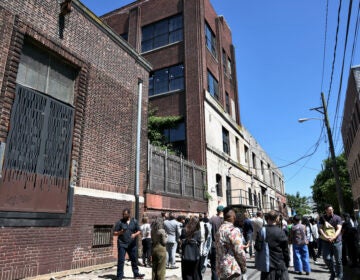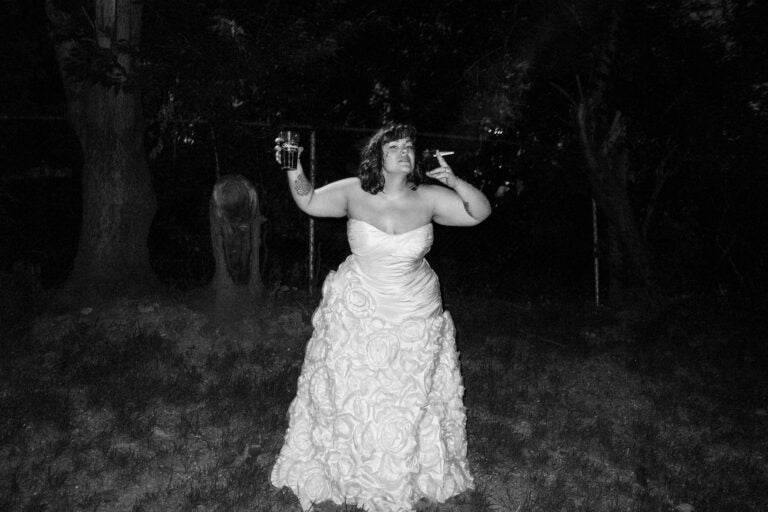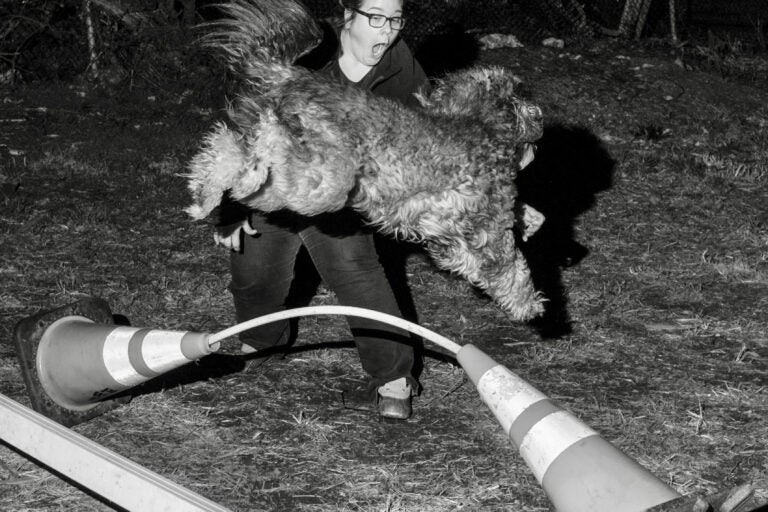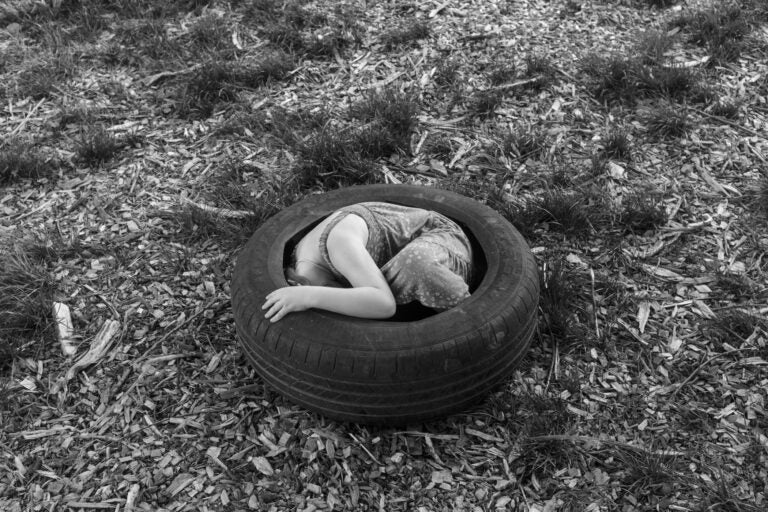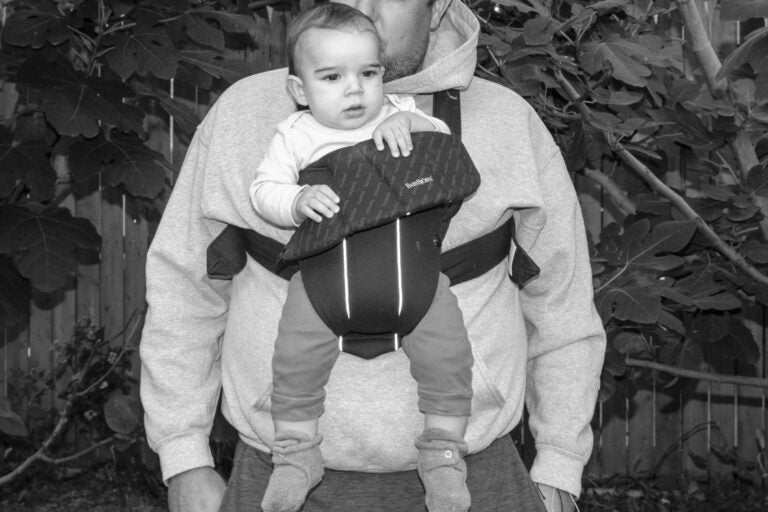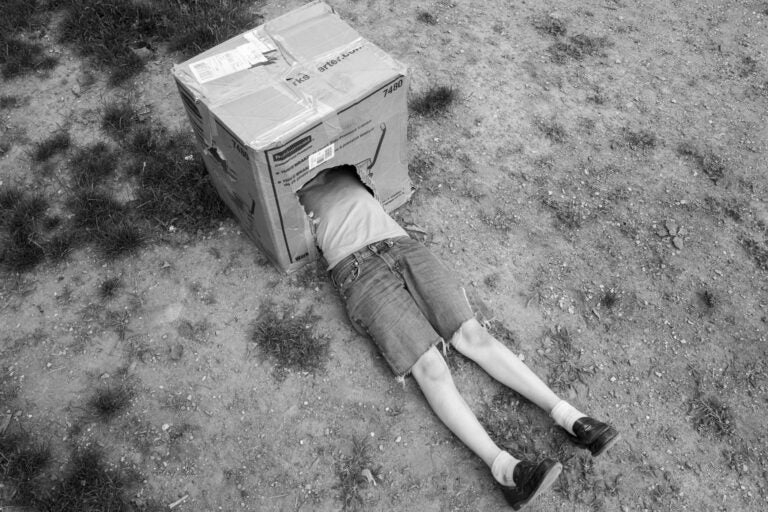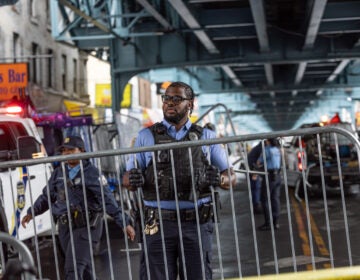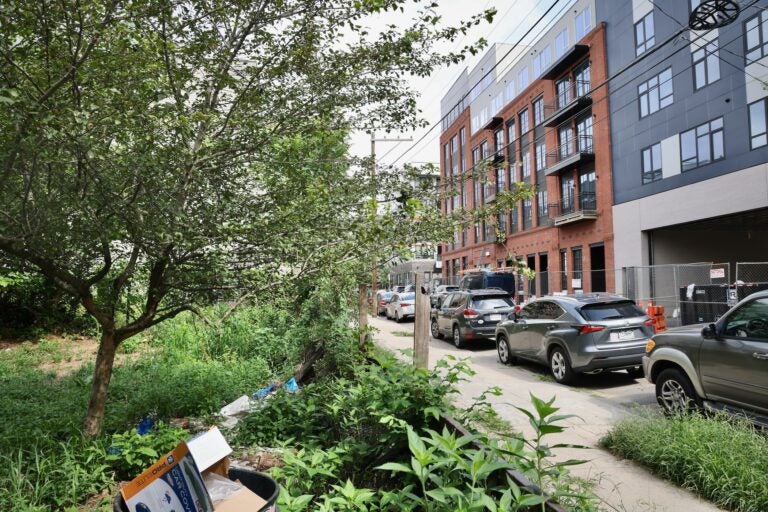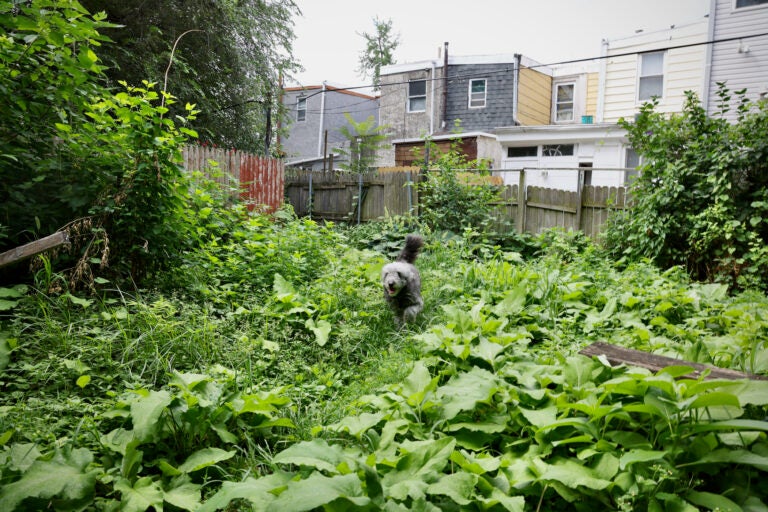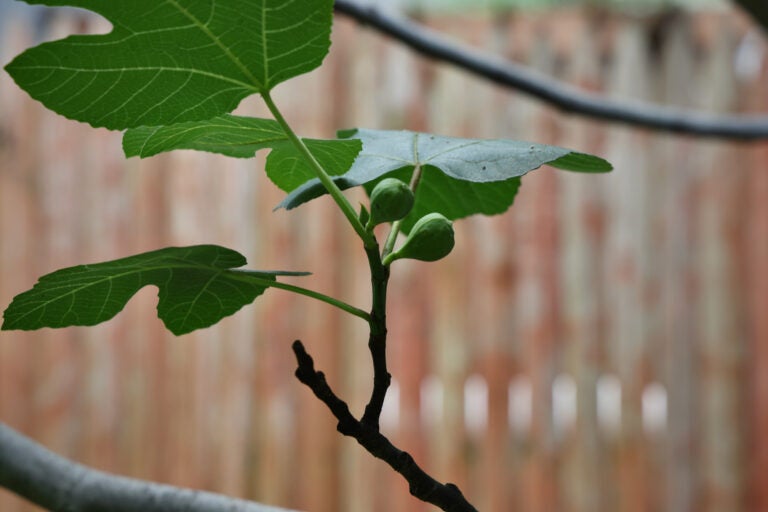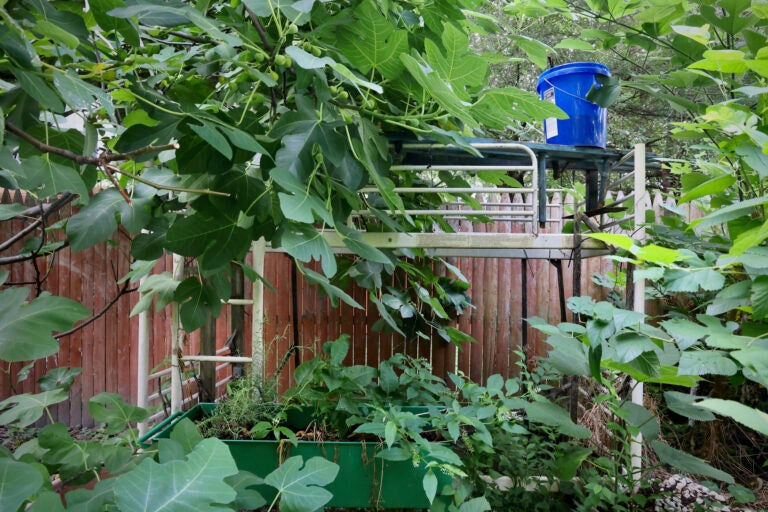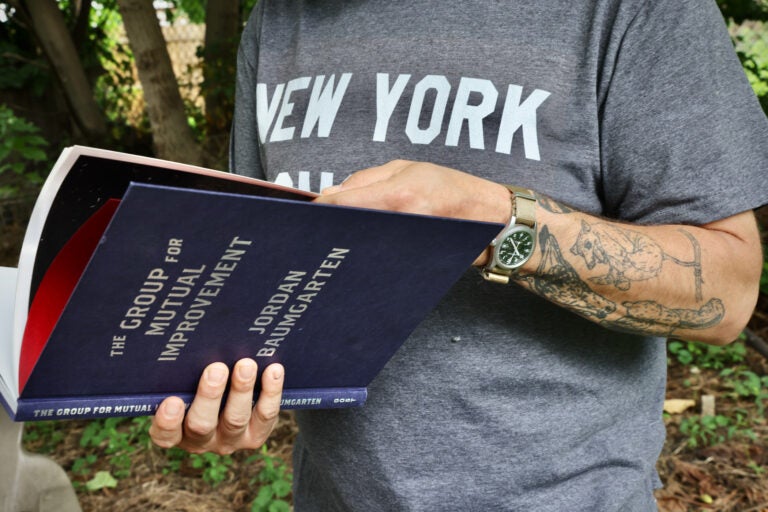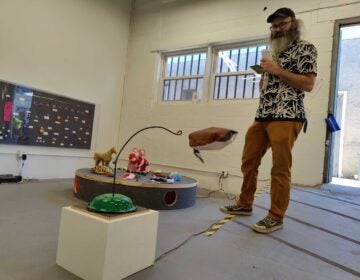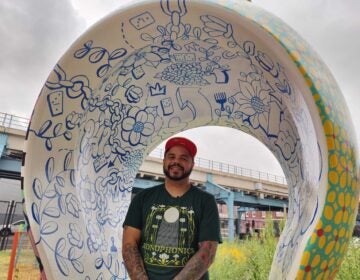Kensington photography book captures a bubble of joy inside a neighborhood in crisis
The photography in “The Group for Mutual Improvement” shows a group of misfit Kensington neighbors building unlikely bonds.
From Philly and the Pa. suburbs to South Jersey and Delaware, what would you like WHYY News to cover? Let us know!
For more than a decade about a dozen neighbors have been informally commandeering a vacant lot on East York Street in Kensington, and used it to build a ragtag community.
The lot is nothing special, just a patch of weedy dirt where three rowhomes used to be. But since 2010, it has been a daily respite for people who may not have otherwise known each other.
“We would come out after work. We’d have a bonfire. We would drink beer. Smoke cigarettes and talk about our day,” said Jordan Baumgarten, whose rented rowhome on Arizona Street backs up to the lot. “Talk about what was happening in the neighborhood. Talk about what was happening in the city. Sports.”
“There’s no TV back here, so we just talk and talk and talk,” he said. “And never ran out of anything to talk about.”
Last spring Baumgarten, a photographer, published his latest book, “The Group for Mutual Improvement,” documenting the people of the lot, their dogs, their children and the bizarre hijinks that arise when they create their own fun.
They built dog agility obstacles out of salvaged garbage. They made masks out of corrugated cardboard boxes. A neighboring family moved away and left behind a metal bunk bed, which became a garden trellis. Baumgarten attempted to teach himself knife-throwing in the lot.
“It wasn’t just a hang out. There were weird, like, ‘Hunger Games’–type competitions,” said Sadie Gray, who helped clear the lot when she moved to Arizona Street in 2010.
Antics in the lots include games such as playing tag with tasers, a game called How Close How Long, wherein players would see for how much tolerance their hand had for an open bonfire, and a jousting tournament on broken bicycles and piece of two-by-four lumber, which, as Baumgarten explained in a recent New York Times essay, was abandoned before it began.
“We all gravitated there. It could be something fun, like everybody was together for a party,” she said. “But then also it could be: I had the crappiest day and I just need people around me.”
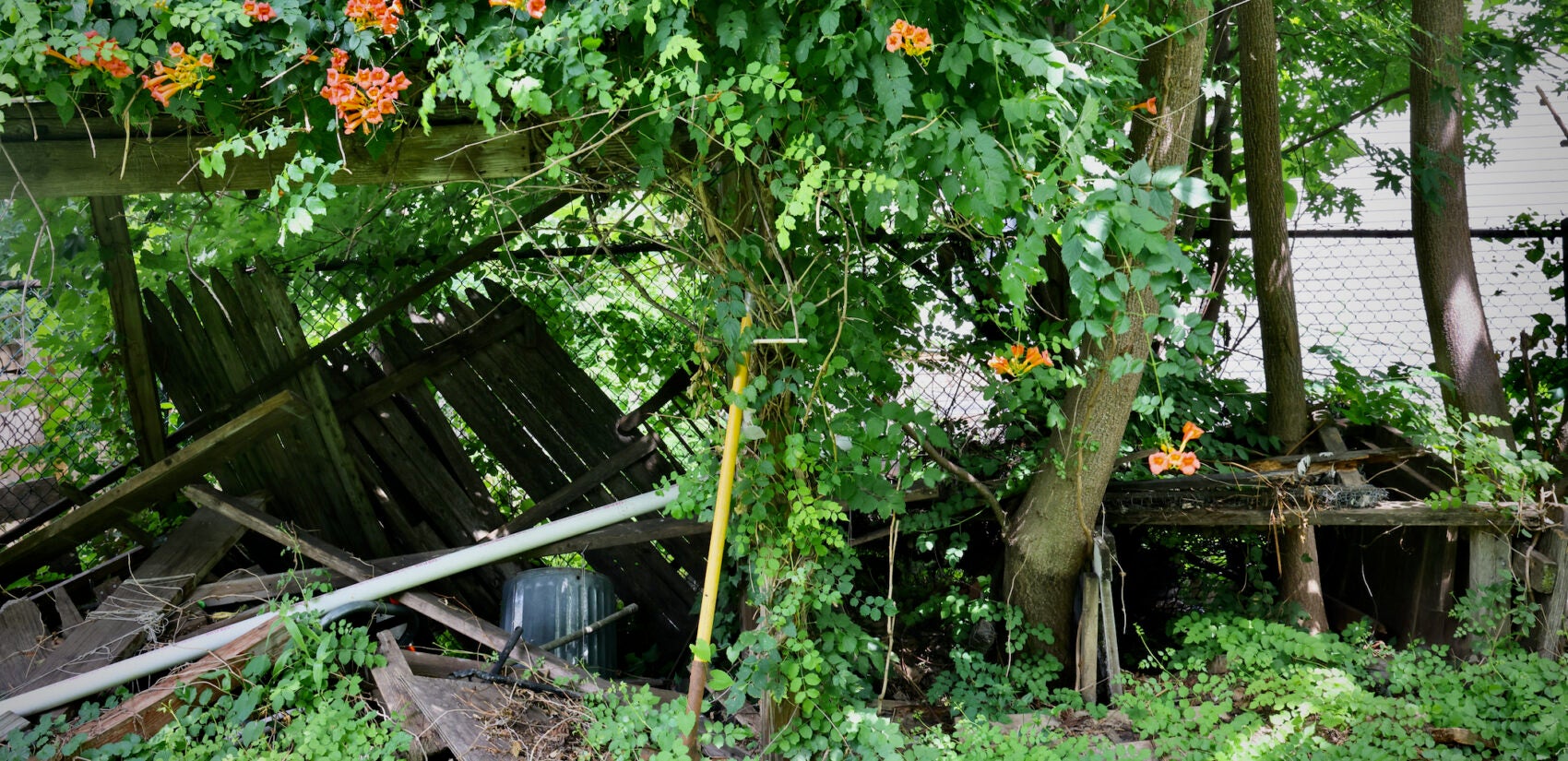
Gray is featured in the book portrayed in her wedding dress while standing in the dirt lot with a beer and smoke. It was taken the first night Baumgarten and his then-girlfriend Anne entered the lot as newcomers in 2013. Gray, who had had a few drinks, instantly hit it off with Anne.
“I just recently gotten married and I was like, ‘You want to see my wedding dress?’ And she was like, ‘Yeah!’” Gray said. “I was, like, ‘Wait right here!’”
When Gray first moved to Kensington she was a single mother of two daughters, and struggling. The lot not only gave her much needed space for her children to run around, but provided her with a social network.
“I was born and raised in southern Utah in a fundamentalist community, where you were supported by your family, or the church,” she said. “Leaving that, it gets taken away from you. You’re no longer entitled to it.”
“So leaving that and raising kids and feeling completely on my own, and the realization that I could be a part of something, it was fulfilling me in a different way,” she said. “I didn’t realize that I lost community, until I found one.”
Gray, who has since moved to Seattle, said “The Group for Mutual Improvement” is a “perfectly curated scrapbook” of a certain period in her life.
It also tells a story about Kensington.
When Baumgarten started photographing the vacant lot in 2013 it was surrounded by other vacant lots. The blight could go on for blocks, populated by people experiencing homelessness and addiction.
Since then, new construction has quickly filled those lots. Baumgarten said he used to have a view across three consecutive vacant lots, but now sees a wall of six-story apartment buildings with roof decks.
“If you look at what’s happening here in Kensington, you can understand what’s happening everywhere else in the country,” Baumgarten said. “You have an out-of-control drug crisis that’s still happening, and you have the growing divide between rich and poor. It’s the front-row seat for all of that right here.”
Baumgarten’s previous book of photographs, “Good Sick” (2018), documented the opioid epidemic in Kensington, showing the squalid conditions of people living in the street and portraits of people trapped in addiction.
“Mutual Improvement” is the flip side, showing a group of people who used a vacant lot to form a bubble of love and support inside a neighborhood in crisis.
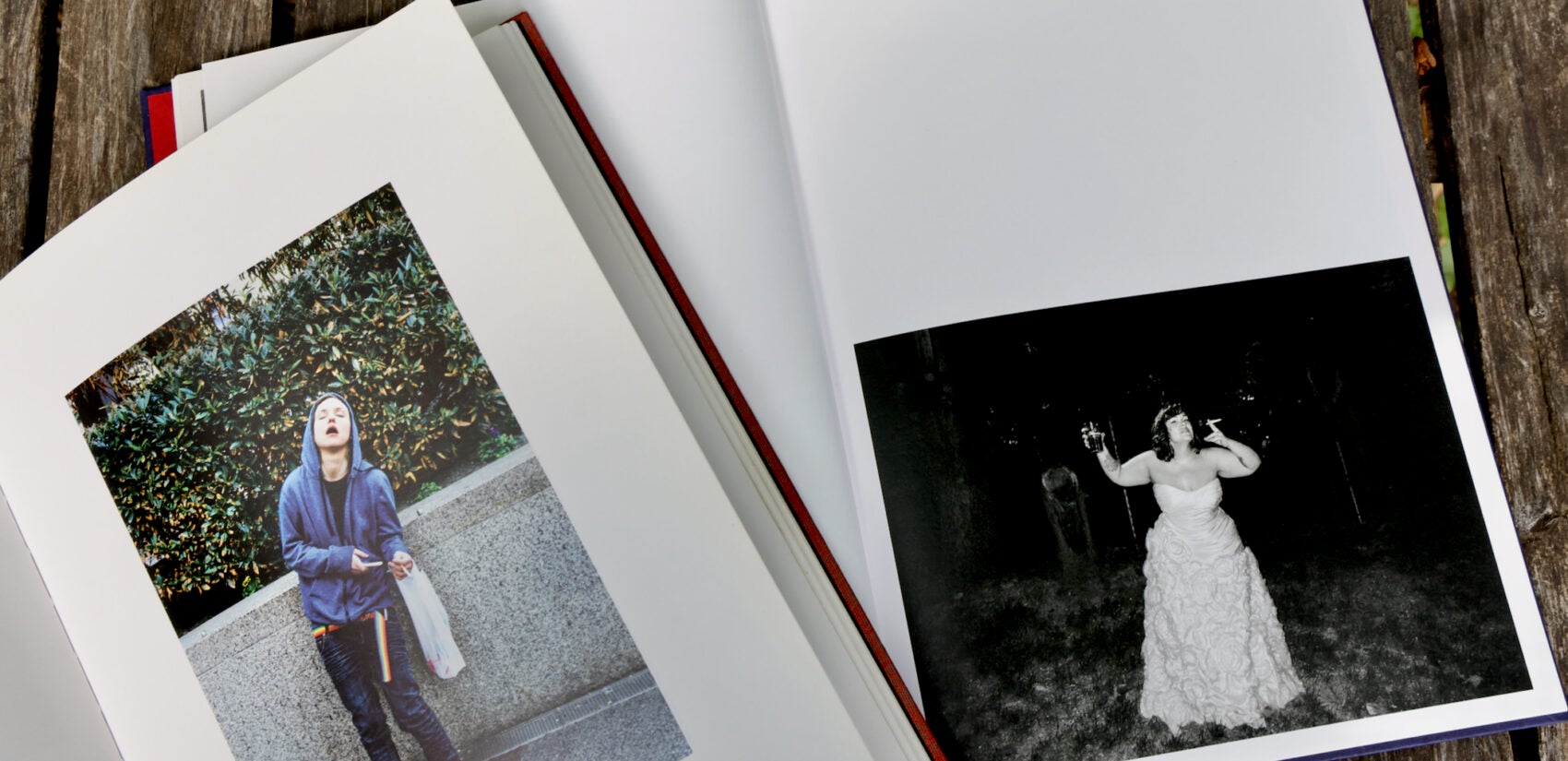
At the end of the book, Baumgarten filled two pages with an extensive list of citizen alert texts that would ping the groups’ cell phones while in the lot. They include the strange (“Woman armed with bug spray making threats at Wawa,” “Man in robot costume knocking on doors”) and the serious (“Man critically injured in ATM explosion,” “Massive fire at Philadelphia Energy Solutions”).
“I think that this community was created because of the world that existed on the other side of the fence,” Baumgarten said. “The world feels really chaotic. Because it is. We’re at each other’s throats in the country. I wanted to put something out that would make you feel good, make you laugh and make you feel an affection for a group of people.”
The vacant lot was originally cleaned out to build a garden. One of the neighbors was studying horticulture at Temple University and installed composting bins and raised beds, and planted two fig trees.
When the gardener moved away, the garden fell apart. Now, the composting bins have collapsed and there is little sign of the raised beds. The fig trees have grown large, however unpruned.
For most of the neighbors the value of the land was not as a garden, but as a place to share each other’s lives. When someone had a significant life event — a wedding, a graduation, a birth — it played out in the lot.
“After my wedding, we showed up with all the bottles of scotch that were gifted to us, and we drank them out of here with everybody,” Baumgarten said. “When Trump won we were back here crying. When Trump lost we were back here celebrating.”
That’s not how John Wisotzkey remembers it.
“I am much more conservative than Jordan. Most people that live there before were on a similar political spectrum. I was a different one,” he said.
“That didn’t stop me and Jordan. We came very, very close,” he said. “I had one way of thinking, they had another way, but we had pretty open discussions that were relatively civil discussions — besides when I got yelled at after Trump got elected.”
Wisotzkey eventually moved to South Jersey with his wife Laura shortly after the birth of their son, but not before Baumgarten included the newborn into the makeshift community.
“Jordan took our first family photo when my son was born,” said Laura Wisotzkey. “Us two, the dog and my baby in the lot. In that back corner where we found kittens that were abandoned by their mom — that happened multiple times. Our first family photo is in the lot.”
Over the last decade, there has been a lot of turnover among neighbors. Baumgarten was once the newcomer but now is one of the neighbors with the longest standing. His dog Walter, a 10-year-old Australian Shepherd Poodle mix, has been roaming the lot all his life.
“We’re very lucky. We don’t know how much longer we’re gonna be able to have it,” Baumgarten said while looking at the new construction surrounding him. “Buildings keep getting built closer and closer, higher and higher. Eventually, they’re all going to swallow this up again.”

Get daily updates from WHYY News!
WHYY is your source for fact-based, in-depth journalism and information. As a nonprofit organization, we rely on financial support from readers like you. Please give today.



